New Orleans journalists face furloughs, memories of Katrina
An issue of The Times-Picayune | The New Orleans Advocate sits on a subscriber’s driveway May 7. Due to COVID-19, The Advocate company put 10% of its staff on a “permanent furlough,” while the rest of the organization’s staff members have had their hours cut for payroll savings, working four-day work weeks once every pay period, according to newsroom leaders.
May 14, 2020
Less than a year after The Advocate won a Pulitzer Prize and acquired the Times-Picayune, creating the largest newsroom in Louisiana and changing the face of New Orleans journalism, a global pandemic hit, raising concerns about the newsroom’s revenue, future and the lives of local journalists.
“This has been like a bucket of cold water,” Martha Carr, managing editor of The Times-Picayune | New Orleans Advocate, said of the COVID-19 pandemic.
Revenue Losses and Payroll Cuts
The New Orleans newsroom went remote in mid-March. The Advocate is continuing to print a physical paper in all three of its markets statewide and removed digital subscription requirements from COVID-19 stories online, moves that Carr said were the right ones to make as a public service despite recent hits to the organization’s revenue.
“We have more people consuming our product, our stories than ever,” Carr said.
The Advocate’s websites saw a 300-400% increase in online traffic in March, according to a piece Editor for The Advocate Peter Kovacs and Publisher and President Judi Terzotis wrote for the news outlet back in March.
“But with the stay-at-home order shutting down the economy, we have lost a tremendous amount of our advertising revenue in print and online, which is a big part of how our organization is funded,” Carr said.
As a result, Carr said The Advocate put 10% of its staff on a “permanent furlough,” where they still receive health benefits but are not working. The rest of the organization’s staff members had their hours cut for payroll savings, now working four-day work weeks once every pay period, according to Kovacs and Terzoitis’ article.
The Advocate isn’t the only newspaper nationwide furloughing and cutting staff hours to stay afloat.
The L.A. Times furloughed a number of employees and stopped contributions to staff 401(k) plans after the organization said its advertising revenue has “nearly been eliminated.” Tribune Publishing, whose holdings include The Baltimore Sun, New York Daily News and Chicago Tribune cut staff pay by 2-10% permanently and is furloughing many non-union employees for three weeks in the next three months. Dozens of print newsrooms nationwide are enacting similar policies.
As a result, The Advocate has set up a tax-deductible donation system to help compensate for the loss in revenue with financial support from the community.
While Carr said The Advocate hopes to bring its furloughed staff members back on as soon as possible, she said the future is uncertain and dependent on how government stimulus programs affect the newsroom’s advertising partners.
“The question is how much of the organization we are able to preserve. That is every newspaper’s concern,” Carr said. “We are going to fight like hell to get back to where we were and continue to grow. But I have just never seen anything like this before.”
Reporting on a Pandemic
But COVID-19 and payroll cuts aren’t just affecting the news institutions in New Orleans. On top of changing newsrooms and uncertainty about their futures, local journalists are having to find new ways to navigate a world in which they are limited on interacting with the very people whose stories they are tasked with telling.
David Grunfeld, director of photography for The Times-Picayune | New Orleans Advocate, said that his approach to assignments during COVID-19 has fundamentally changed.
Having spent more than 40 years getting up close and personal with his subjects, Grunfeld now has to capture the moment from at least six feet away. Photographers in his newsroom are also not allowed to go into any buildings, limiting coverage for the whole team.
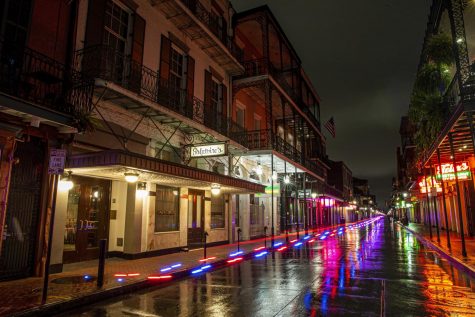
In this Friday, May 8, 2020, photo taken by David Grunfeld for The Advocate and AP, Bourbon sits empty and abandoned during COVID-19. Grunfeld, along with other local journalists, has had to communicate the stories of the city while also avoiding social contact during COVID-19. (David Grunfeld/The Advocate via AP)
Instead of capturing a photograph for every story, safety concerns have forced Grunfeld’s team to only shoot photographs for front page stories and prominent section content.
“Everybody has families, and staying healthy is the most important objective every single day during this pandemic,” Grunfeld said.
Despite the changes brought on by the coronavirus pandemic, Grunfeld still strives to capture the emotion of the New Orleans community at this time.
“We are the watchdog over the people’s money. Powerful photographs influence people, so in order to continue creating small community journalism, it has to be supported,” Grunfeld said.
Grunfeld’s concerns about being able to show the whole picture of life during the coronavirus are also shared by WWL-TV general assignment reporter Meghan Kee.
Kee has had to drive her personal car to live locations, no longer able to ride with her photographer. Like all WWL-TV reporters, she said she is required to be six to 10 feet away from interview subjects in person and can’t enter any buildings for footage, limiting how much of people’s lives she can cover.
“This doesn’t allow us to give as much of a picture of what’s going on,” Kee said of COVID-19 safety requirements. “We can show it, but it’s disconnected.”
Kee said that because journalists are essential workers, she worries daily about heightened exposure to the very virus she is tasked with covering.
“I’m just constantly praying for myself, my family, my friends, and then everyone else who’s either struggling with the coronavirus or taking care of someone or someone’s loved one who’s already passed from it,” Kee said.
Amie Just, a sports reporter for The Times-Picayune | New Orleans Advocate said the anxiety of the time makes it difficult to remember what day it is.
“When you look at the state of journalism as a whole, it is hard to believe it has been two months. It feels like a week, and simultaneously it feels like a year,” Just said. “I have a whiteboard calendar in my kitchen and it says ‘May-march-vember-uary.’”
A Familiar Feeling
While learning to report on COVID-19 is uncharted territory for newsrooms nationwide, it has brought many New Orleans journalists back to a time they just can’t seem to escape: August 2005.
“It reminded me so much of a hurricane,” Carr, who covered Hurricane Katrina, said of the early days of COVID-19. “You have a mixture of anxiety about what the public needs now more than ever, they need you now more than ever, and you are also acutely aware of your employees, the journalists, and the impact it is having on their personal lives.”
But reporters don’t just see COVID-19 as a force reshaping their everyday lives and dominating the stories they cover. For Just, and many more, it is a chance to write history.
“We are going to look back on this in 10 years, 20 years, 100 years,” Just said. “It’s weird. We are living in history, and we know that it is history. And we are going to need the newspapers to help us chronicle that.”
For Grunfeld, chronicling history is nothing new. During Katrina, he watched the city rebuild and won a Pulitzer Prize while working for The Times-Picayune, a memory that is inspiring him as he covers the coronavirus pandemic.
“After Katrina, we were resilient. We realized the mess the city was in, and we put it back together, but I think it’s more than resilience. I think it’s the human spirit that is alive and well, and resilience is just one part of that human spirit,” Grunfeld said.
And Just hopes this resilience will help keep local journalists and newsrooms afloat during and even after COVID-19.
“Without the Times-Picayune in 2005, how many more lives would have been lost?” Just said. “I think the same thing right now.”


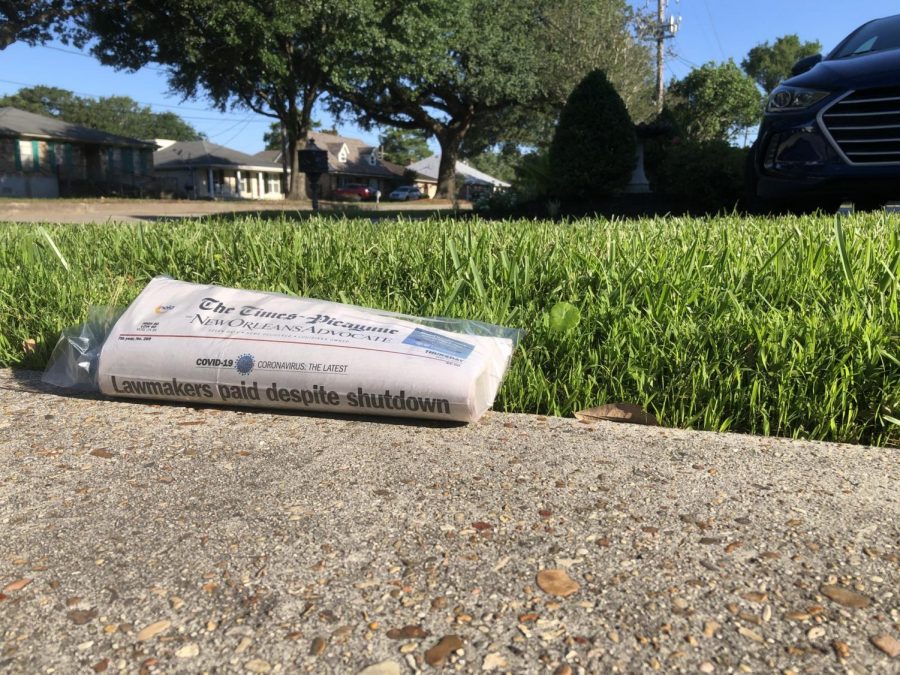
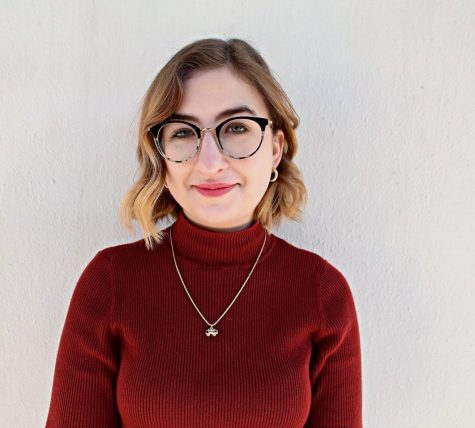

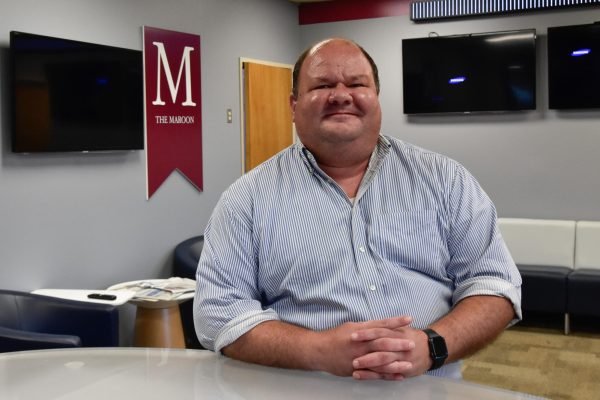

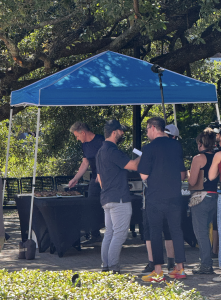
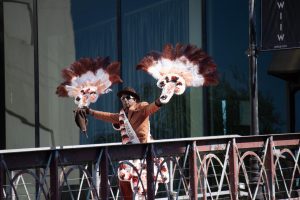

Andrew Canulette • May 25, 2020 at 6:51 pm
Thanks for sharing this story. Nice work.
Jeanne Nathan • May 17, 2020 at 9:12 am
Everyone, subscibe!